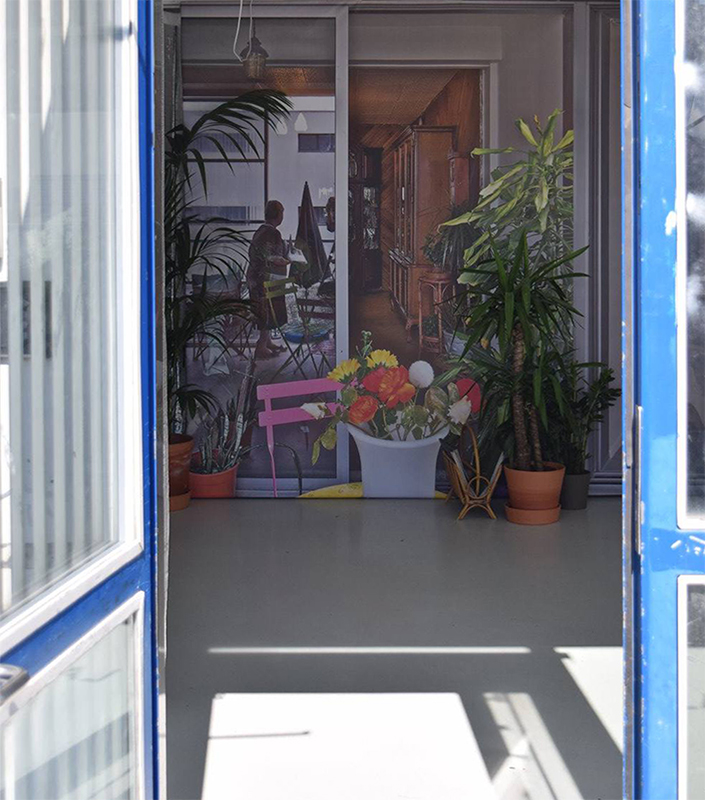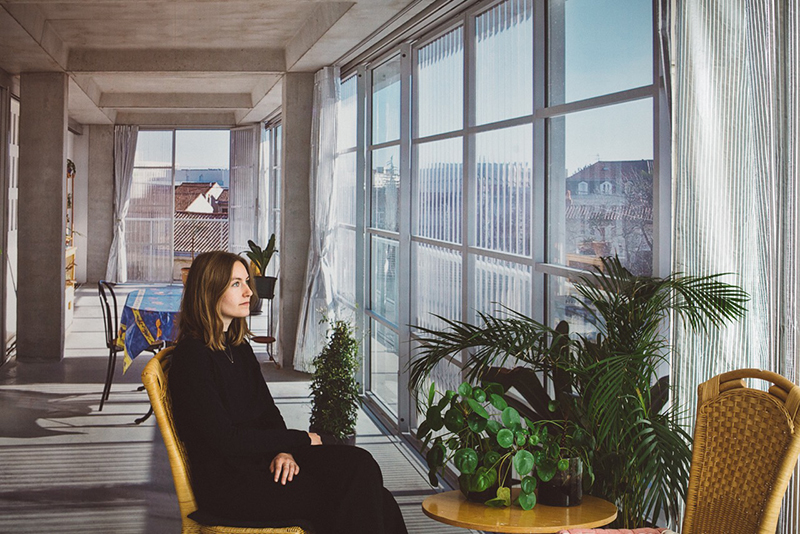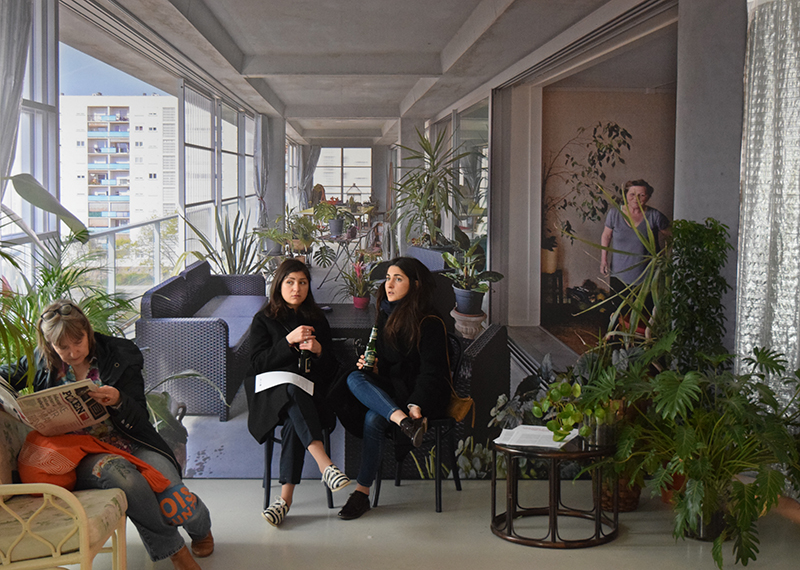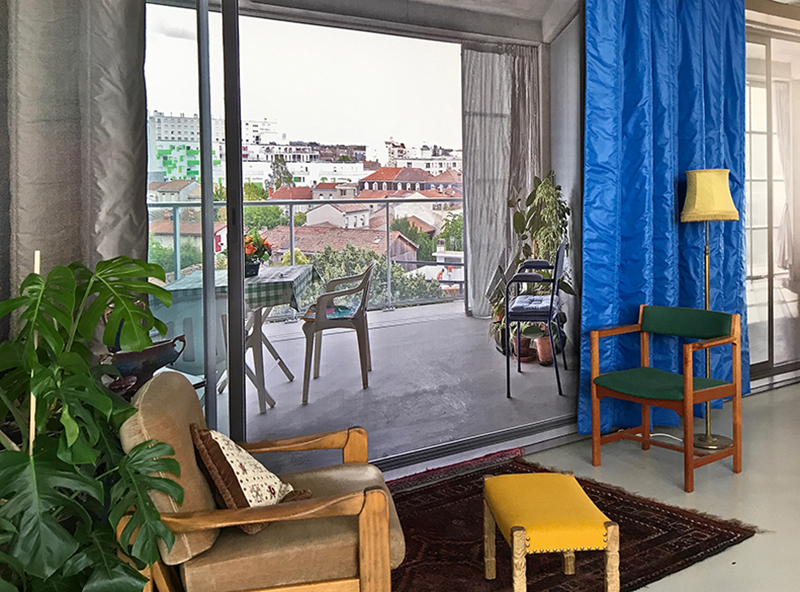NEVER DEMOLISH
In the 1960s and 1970s, large-scale housing complexes were built all over the world as a bold solution to satisfy the need for housing. Five decades later they are largely considered as ideologically outdated, urbanistically failed, and ripe for demolition. Against this backdrop Never Demolish claims that these projects can have a second life that’s better than their first, through sensible renovation – enlarging the spaces and improving living standards. The exhibition features the spectacular transformation of 530 dwellings across three high-rise buildings of the Cité du Grand Parc in Bordeaux, France designed by the architectural offices of Lacaton & Vassal, Frédéric Druot and Christophe Hutin as a potential model for the social and physical rehabilitation of the mass-housing estates of modernism.
Curated by Ilka and Andreas Ruby for the Copenhagen Architecture Festival 2017 Never Demolish presents this project for the first time in Denmark, addressing architects, urban planners, developers, heritage conservationists, and politicians alike. To help facilitate a discussion about the proposal in light of the current Danish housing situation, the exhibition is staged at two different sites, the gallery SPACE10 in Copenhagen and the Gellerup Museum in Aarhus, using life-size images of the project in two different ways: while at SPACE10 the project from Bordeaux is materialized as a 1:1 scenographic mock-up inside the space of the gallery, at the Gellerup Museum it is recreated within a former apartment in the Gellerup housing complex, which is now used by the Gellerup Museum. (more on Never Demolish at Gellerup Museum)
CITÉ DU GRAND PARC: CONTINUATION OF A BUILT MANIFESTO
In the 1990s legislation passed in France that attempted to take on the problematic that had come to be associated with large housing estates. As a riposte to the national policy decision to demolish and reconstruct the stock of social housing, in 2004 Lacaton & Vassal, together with Frédéric Druot, presented their study PLUS. Against of a backdrop of increasing housing scarcity, the study revealed the economic absurdity and social violence of this procedure: since 2003, the French government has spent 2.98 billion euros to demolish 113,200 housing units and 12.64 billion euros to rebuild just 105,000 units – a total spend of 15.62 billion euros for a loss of 8,2000 homes. In an emphatic rejection of the demolition-and-reconstruction model, the architects instead proposed preservation and transformation as alternative tools. This formula was intended to deal not only with the situation from an economic standpoint but also from the perspective of the people living inside the architecture.
This practice was first successfully demonstrated in the architects’ renowned (2011) project Tour Bois Le Prêtre, a refurbishment of a single social housing tower on the outskirts of Paris. Following the Tour Bois Le Prêtre as a precedent, the project in Cité Grand Parc by Lacaton & Vassal, Frédéric Druot and Christophe Hutin shows a continuation of the architects’ manifesto at a much larger scale. After the question of demolition had been ruled out, three 10 to 15-storey-high buildings (blocks G, H and I) were earmarked for renovation as part of a larger programme for the modernist social housing estate, which comprises more than 4000 dwellings.
The general economy of the project is predicated on the decision to transform the buildings without any critical intervention on the existing structure, such as the floor slabs or the staircase. Rather, the transformation proceeds through additions and extensions. It consists of a 3.8 metre-deep space added in front of the existing facade, namely the winter garden and balcony. This longitudinal space creates a new ground for the residents, giving them the opportunity – as in an individual house – to extend their living territory into a private outdoor space. Due to extremely efficient building logistics using prefabricated concrete elements, the construction could take place while the apartments were still occupied. No one was forced to move out during or after the renovation process and, in addition, all rents were maintained.
NEVER DEMOLISH IN SPACE10 COPENHAGEN: A ONE TO ONE STAGING OF SPATIAL TYPES
The exhibition in SPACE10 in Copenhagen communicates this transformation through a direct simulation of the spatial “types” of the project – the apartment interior and the newly added winter garden. A 10-metre-long wall displaying 1:1 scale images stands in the centre of the exhibition room. On one side of the wall, a selection of images that look into living rooms from the perspective of the winter garden are presented. On the other side, the view outside appears, as seen through the winter garden from the interior rooms.
Additional props such as thermal curtains, polycarbonate sliding doors and pieces of furniture help to convey the ambiences of the two spaces, whilst the images allow a visual connection to be maintained. Through this dialogic division of space the visitor is able to experience what happens in both the original and the newly added space, starting from the inside.
→ For more on Copenhagen Architecture Festival
→ For more on the publication of Tour Bois Le Prêtre
Space 10, Copenhagen, 27 Apr –7 May 2017
Gellerup Museum, Aarhus, 27 Apr – 31 May 2017
Architektursalon Hamburg, 12 Oct – 23 Nov 2017
Architektursalon München 03 March – 19 April 2018





















